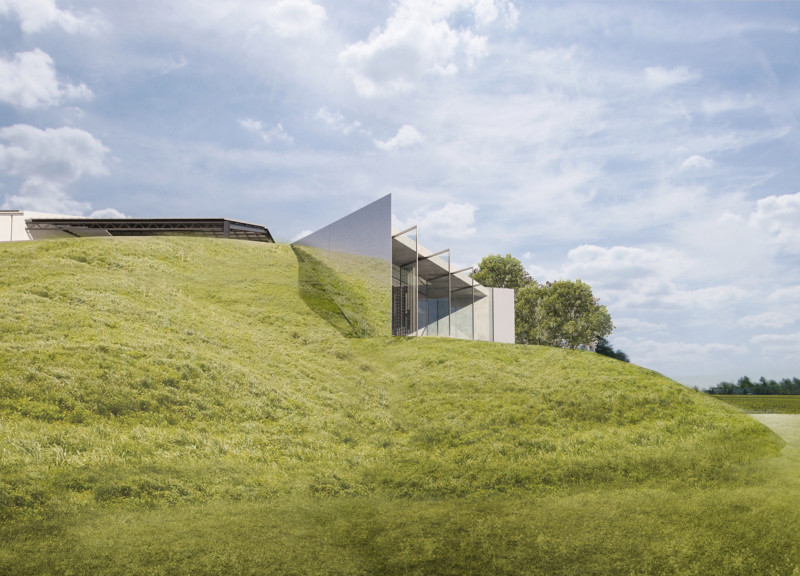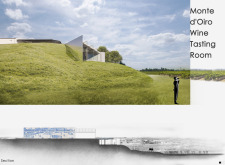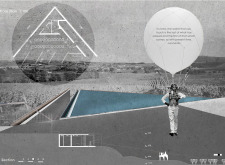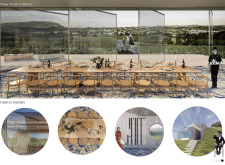5 key facts about this project
The architectural design emphasizes sustainability and harmonizes with the natural elements of its location. By employing a selection of materials, the project achieves both durability and a strong visual connection to the local context. Key materials such as traditional Azulejo ceramic tiles introduce cultural resonance, while polished metal facades reflect the environment, creating a dynamic interaction between the structure and its surroundings. Concrete serves as the primary structural element, providing stability and an understated elegance that supports the overall design philosophy.
Inside, the wine tasting room is organized to encourage interaction among guests, fostering a sense of community that is vital to the experience of wine tasting. A central communal table positioned near expansive glass walls promotes connection to the outdoor views, inviting natural light and the serene landscape into the interior. The thoughtful division of spaces ensures that the room can cater to various activities—tasting sessions, group discussions, or quiet moments of reflection—further enhancing its multifunctionality.
Unique design approaches include the use of geometrical shapes, particularly the triangle, which not only adds visual interest but also aids in creating a sense of flow throughout the space. The landscaped green roof contributes to climate control while presenting an appealing natural aesthetic, allowing the building to coexist harmoniously with its environment. Water features integrated into the design reflect the themes of nature and tranquility, enriching the sensory experience of visitors.
The Monte d'Oiro project represents more than just a tasting room; it embodies a philosophy that prioritizes environmental stewardship, social interaction, and cultural appreciation. Its architectural language speaks to both contemporary ideals and traditional influences, offering insights into the art of winemaking in a setting that celebrates its roots.
For those interested in exploring the nuances of architectural design and the specifics of this project, further examination of the architectural plans, architectural sections, and architectural ideas will provide deeper insights into the innovative design strategies employed. Engaging with these elements is essential for understanding how the Monte d'Oiro Wine Tasting Room successfully embodies its purpose while inviting guests to connect with both the product and the place.


























